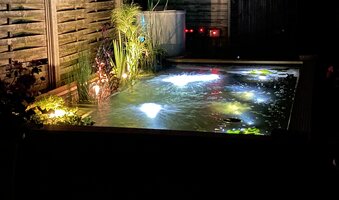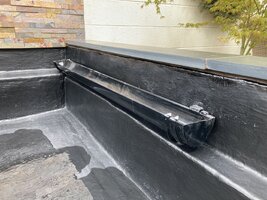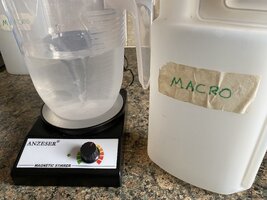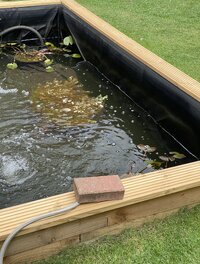My only pressing concern is that most of the submersed oxygenators have exhibited minimal growth or melted away.
Okey dokey… Firstly, they require being submersed. If not you’ll lose lower growth in favour of emersed growth. Note your Myriophyllum Brasiliensis:
The benefit of the plant’s photosynthesis is mostly going into the atmosphere, not the water column.
Second, they will favour a pond with continual surface agitation for gas exchange. As the above picture shows, once there’s access to adequate co2/o2 the root stock can get to work. It’s misleading as you’re watching the death throes of the plant before the stem rots and the tops float off to find a new home. You may consider running your waterblade 24/7 for continual top up of co2/o2. If that is an issue there’s always an air pump and airstones.
Lastly, they’re voracious growers so will require fertilisation via root and water column if you want the best from them, followed with trimming to keep them submersed.
The biggest limiting factors are gas exchange and flow around the pond for distribution. Despite them being called oxygenators (all submersed plants are during daylight) the co2 input needs to be there for carbon, unless the design of your system were dramatically different e.g. nature pond, massive relative plant mass to water volume. It’s also impossible to know if there is any fertilisation amendment required yet until gas exchange is solved.
Same plant (with pump and aeration off for photo) here:

With everything on, look at the surface agitation:

To the point… They are no different from stem plants in the tank and require a narrow set of circumstances to thrive…

For the hassle, is it worth tending to these ‘oxygenating’ species for you Ian or would you be better served by running air or the waterblade for guaranteed oxygenation of the pond?
Also, there’s a ton of native species that will survive year on year so planting those out now instead could be worth a punt.
































